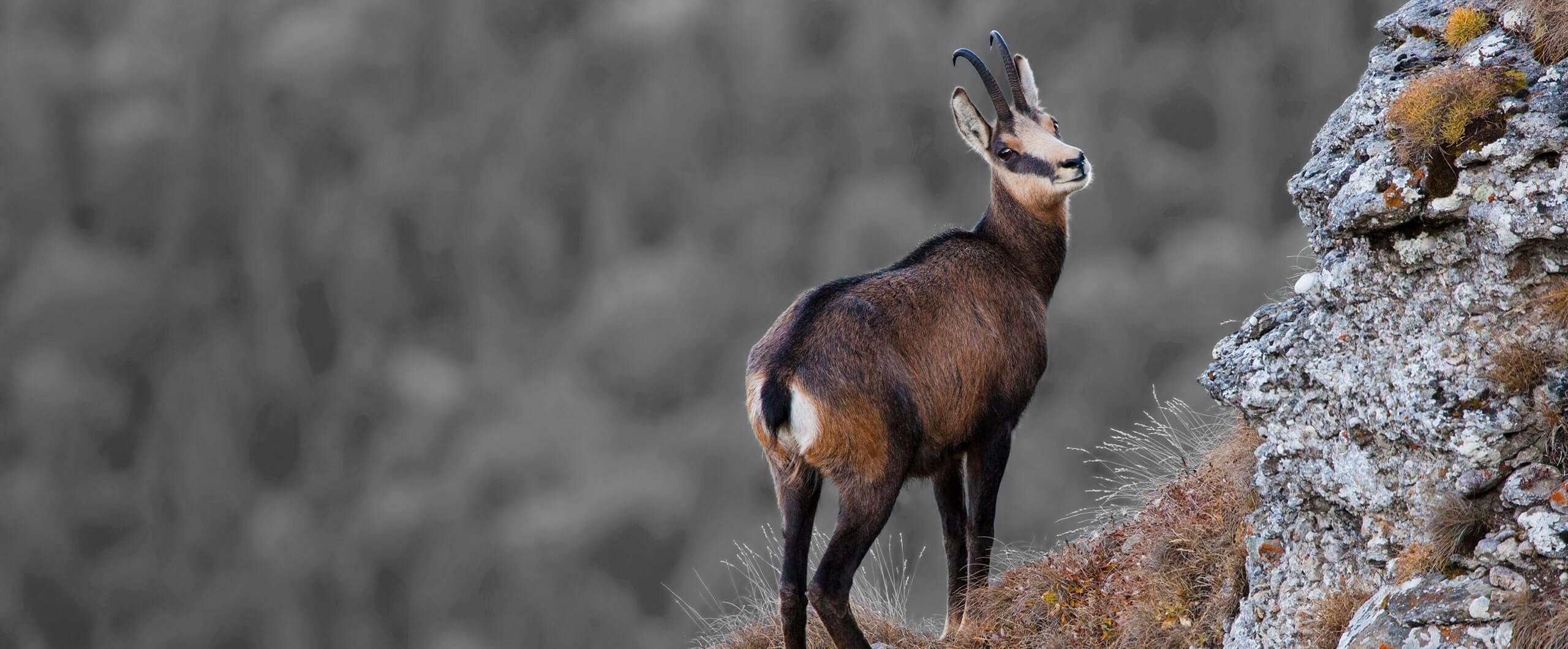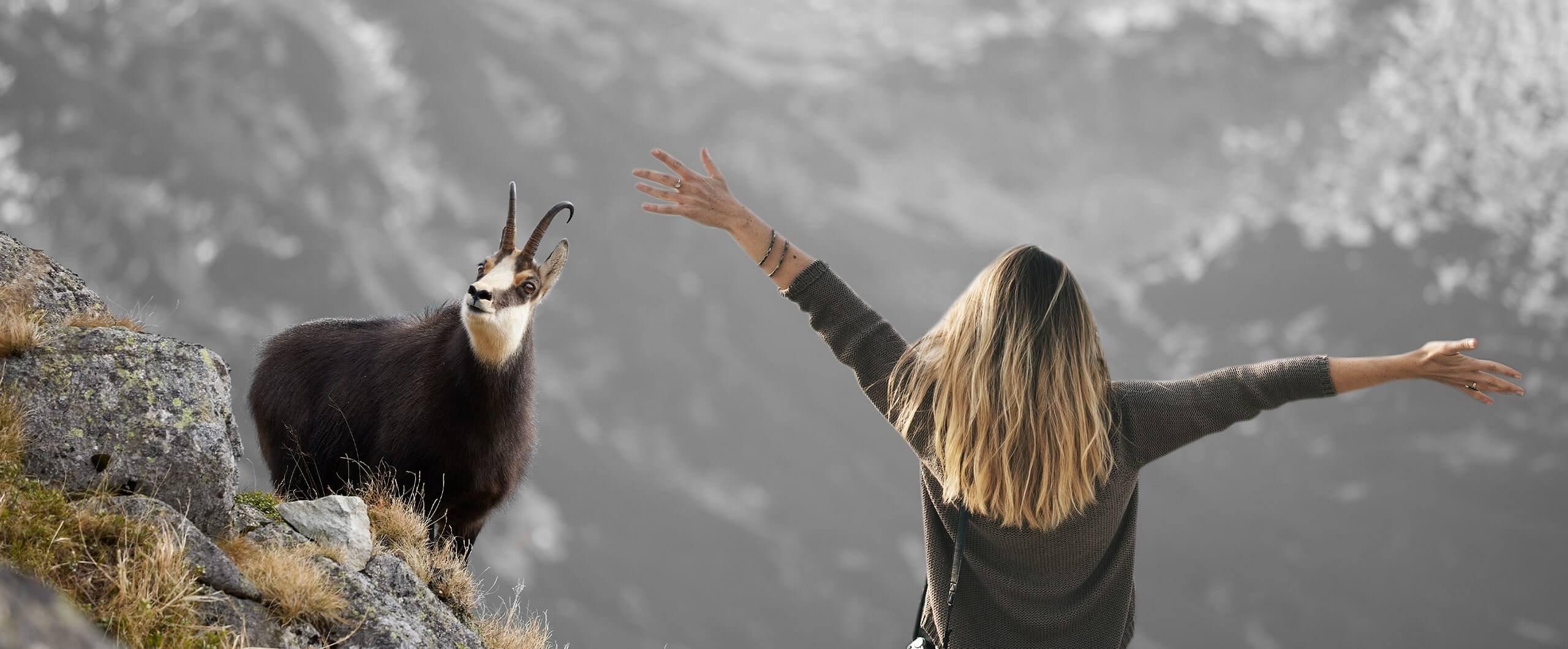
Chamois
(Rupicapra rupicapra)
Profile
- Length: 120-150cm
- Instep height: 70-85cm
- Weight: females 25-40kg, males 35-50kg
- Rutting and mating season: November to December
Nutrition
Chamois feed on grasses, herbs and leaves in summer, sometimes also on mushrooms. In winter their diet consists of lichens and mosses, shoots and buds of shrubs and conifers. They are very frugal and their stomach adjusts to the more fibrous food in winter. The early morning and evening hours are mostly used for foraging.
Behavior
Chamois are diurnal and always live in the same territory. Females, fawns and yearlings form packs of 20-30 animals. For the birth of their young, the bucks separate from their herd for a short time. Young bucks form smaller packs, older males are mostly solitary..
During the rutting season, the sexes meet. The bucks defend their territory and their female against rivals. There are also intense fights - the risk of injury is high. During this time, the bucks hardly take any food - there is a danger that the fat reserves are not enough for the upcoming long winter.
Danger
You can flush out chamois from a relatively long distance. Their escape distances vary from well under 100 meters to over 300 meters. The animals perceive winter sportsmen approaching quickly as a great danger, which drives chamois to strenuous flight.
Escape in high snow takes a lot of extra energy. If they are driven away from the best winter habitats into the forest, they cause browsing damage to young trees.
